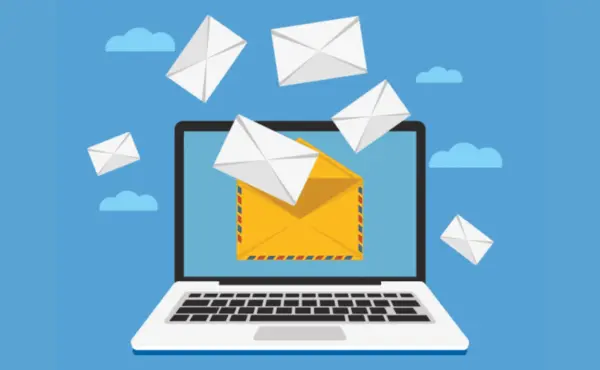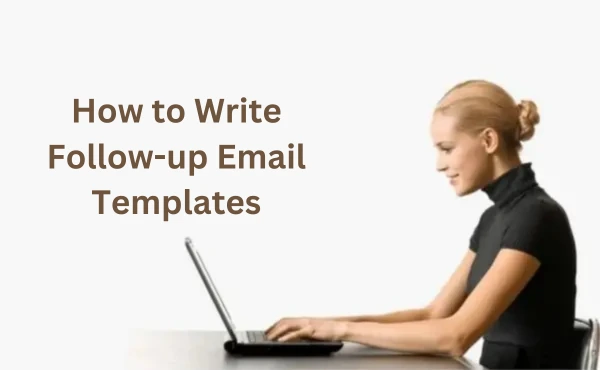Yes, Boost Inbox is designed to cater to businesses of all sizes and industries.
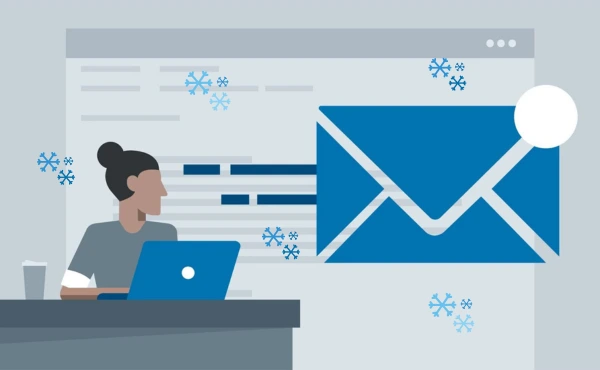
- How to Write a Cold Email
- What is a Cold Email Campaign?
- Mastering Cold Email Campaigns
- Understanding Cold Email Length
- Legal Compliance in Cold Emailing
- How Long Should A Cold Email Be?
- Maximizing Cold Email Success
- Technical Setup for Better Deliverability
- Spintax cold email
- Building and Maintaining Quality Email Lists
- The Power Of Clear And Concise Communication In Cold Emailing
- Cold Email Success
- Key Metrics for Cold Email Campaigns
- Writing An Effective Cold E-mail: A Step-By-Step Guide
- The Ways Make Cold Emails Quick?
- When Are You Making Cold Emails Longer?
- Cold Email Templates
- The Position Of Personalization In Cold Emails
- Personalized Cold Emails: Strategies For Connection And Conversion
- Tools To Decorate Your Cold E-Mail Approach
- Conclusion
- FAQs
Cold emails are important for modern outreach, whether you're pushing offerings, growing your network, or building enterprise-to-commercial enterprise connections. They help you make connections, meet new people, and share your thoughts. Making cold emails that receive replies, however, can be challenging.
Finding the ideal mix between adding value and keeping the message brief is important for being an excellent cold email writer. How Long Should A Cold Email Be? To ensure the email feels relevant, personalized outreach is important. Finding the ideal email length is one of the most important and challenging situations.
How to Write a Cold Email
In today's fast-paced world, short emails are often more effective. People don’t have time to study lengthy messages, in particular if they don’t recognize you. keeping your cold emails concise makes them more likely to be read. A concise cold email is obvious and straight to the factor. It’s easy for the person to recognize what you want and why they have to care.
To make certain long should a cold email be convincing, you need to follow some proven and effective strategies, Start with a personalized outreach approach. Personalizing your email shows the recipient that you’re now not sending a customary message. you can upload their name, point out something specific about their enterprise, or Explain your belief that they could be curious about what you're showing. This small action has a huge impact on capturing their attention.
What is a Cold Email Campaign?
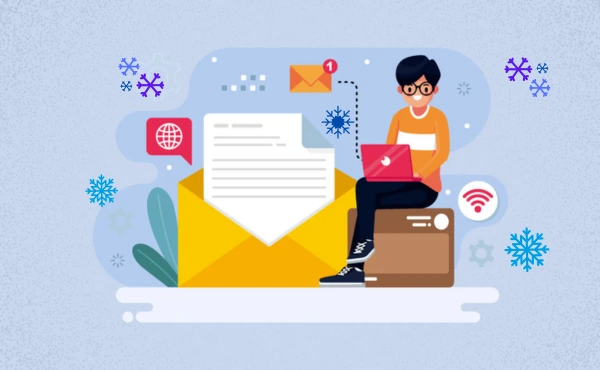
Cold email marketing is when organizations send unsolicited emails to potential customers, partners, or leads. In contrast to ordinary junk mail, cold emails are focused and practical. They are designed to create connections and build relationships. The goal of these emails is to introduce an offer, provide value, and ultimately convert the reader into a customer or business partner.
Whilst you ship a cold email, it’s important to create how long should cold email be a message that grabs interest. A cold email funnel facilitates prepare the method of sending multiple emails, guiding the possibility little by little. This funnel generally begins with an advent email and consists of complying with emails to keep the conversation going. Writing exceptional emails is fundamental to achievement.
Email copy conversion is a way to turn the reader's interest into action. The email has to explain why your offer is useful and encourage the recipient to do so, like reserving a meeting or signing up for a provider. To keep the system transferring, it’s important to ship cold email observe-ups. These follow-ups remind the recipient about your offer and keep your business on their radar.
Mastering Cold Email Campaigns

To run a hit cold email marketing campaign, you need the proper equipment. Email marketing campaigns assist you prepare, agenda, and music your emails. Using cold email software makes sending and managing cold emails tons much easier. Those gear allow you to automate the technique, and song responses, and ship personalized messages at the right instances.
Effective email marketing tools are important for accomplishing the proper humans and making sure your emails are effective. The first-rate cold email tools help you design professional emails, track responses, and manage your contact list. They keep time and improve your chances of achievement. A cold email outreach instance might seem like this: "Hiya [Name], I see your agency is doing great matters in [industry]. I consider our service ought to help you keep time and increase performance.
Let’s chat! First-class, [Your Name]. " it is quick and direct, which is right for a cold email. The use of email lead technology strategies ensures you are sending your cold emails to the right people. Concentrating on the right target audience is vital for purchasing correct results. Combined with the proper gear and techniques, cold email marketing can help your enterprise grow by turning leads into customers and companions.
Understanding Cold Email Length
Due to the fact quick cold emails cater to receivers' quick attention spans, they're powerful. Within the fast-paced virtual world of today, professionals and busy executives get a ton of emails every day. A message that is short and engaging is more likely to be seen and read all the way through.
Shorter emails additionally sell clarity. By cutting out superfluous words, they permit you to effectively and succinctly speak your price offer. Specializing in clear communication will increase the probability that you may get the outcomes you want.
Legal Compliance in Cold Emailing
Before starting any cold email campaign, ensure compliance with these key regulations:
CAN-SPAM Act Requirements:
- Include your physical business address
- Provide a clear unsubscribe option
- Use accurate sender information and subject lines
- Honor opt-out requests within 10 business days
GDPR Compliance (for EU recipients):
- Obtain proper consent or establish a legitimate interest
- Include privacy policy information
- Maintain records of consent
- Provide data processing information
Email Authentication:
- Implement SPF records
- Set up DKIM authentication
- Enable DMARC protection
How Long Should A Cold Email Be?
When it comes to cold emails, much less is greater. The suitable email duration for a chilly email is between 50 and 125 phrases, allowing you to deliver your message without overwhelming the reader. Brief emails get immediately to the factor and keep the recipient's interest. Brief emails are effective because they appreciate the recipient’s time.
Human beings acquire many emails day by day, and they're more likely to read and respond to quick, smooth-to-understand emails. A brief email isn't only respectful but also much more likely to be examined totally. When writing a chilly email, the situation line is important. It has to be short, clear, and intriguing to ensure the email is opened. Customized emails are a lot more of a success than ordinary ones.
Bringing up something specific about the recipient, like their commercial enterprise or hobbies, facilitates creating a connection. A successful cold email has a clear message. It must attention to one principal point, inclusive of offering a product, introducing a provider, or suggesting an assembly. Keep away from pointless information and preserve the message focused on higher knowledge and movement.
Maximizing Cold Email Success

Using cold email format templates can be useful. They provide a structured format while allowing personalization and a personal touch. When unsure what to jot down, a response template may be beneficial. Sales prospecting emails are wonderful for attaining out.
These emails ought to in short explain how your services or products advantage the recipient. Clear and concise emails without useless fluff grow the chances of a response. Tracking the email campaign's overall performance is vital. Using tracking open fees and responses, you can see what's operating and make enhancements.
The perfect length for a cold email supplies a powerful message without wasting the reader's time. Maintaining your email between 50 and one hundred twenty-five words enables you to get straight to the point, making it much more likely to be examined and responded to. With the right challenge line, personalization, and attention, your cold emails can be an awful lot greater powerful.
Technical Setup for Better Deliverability
Domain Warm-up:
- Start with 20-30 emails per day
- Gradually increase volume over 4-8 weeks
- Target engaged contacts initially
- Monitor spam placement rates
Infrastructure Setup:
- Use dedicated IP addresses for cold outreach
- Implement proper DNS records
- Set up reverse DNS
- Monitor domain reputation
Authentication Protocols:
- SPF: Add proper SPF records to prevent spoofing
- DKIM: Implement email signing
- DMARC: Set up monitoring and reporting
Spintax cold email
In today’s fast-paced world, brief cold emails are highly effective. Busy professionals and executives receive many emails daily, with shorter attention spans due to the constant information flood. A quick and focused cold email has a much better chance of being noticed and read through to the end.
The key to success with cold emails is being concise. Keeping emails short shows respect for the recipient's time, increasing their likelihood to open and engage. Busy executives, inundated with emails, are more likely to open a brief one.
Brief cold emails improve readability and personalization. The message should be clear and direct, avoiding unnecessary details. By reducing wordiness, the value proposition becomes clear, showing what's in it for the recipient quickly. If the offer is too lengthy or complicated, the recipient may lose interest before understanding it.
Building and Maintaining Quality Email Lists
List Building Best Practices:
- Use double opt-in when possible
- Implement email verification tools
- Regular list cleaning (every 3-6 months)
- Remove hard bounces immediately
Email Verification Process:
- Syntax validation
- Domain validation
- Mailbox verification
- Remove disposable emails
- Check for spam traps
List Segmentation:
- Industry
- Company size
- Geographic location
- Previous engagement
- Purchase history
The Power Of Clear And Concise Communication In Cold Emailing
Clear communication is a huge advantage in email strategy. By getting your point across in fewer words, you increase your chances of getting the desired results. Busy people appreciate brief emails, which show professionalism and respect for their time.
Short cold emails are easier to read on mobile devices. Many people check emails on smartphones, where long emails don’t display well. A brief, well-organized message fits better and is easier to read and respond to. This is important for B2B cold emailing, aiming to quickly connect with potential business partners or clients.
Using cold email templates can help. They provide a cold email structure while allowing personalization. The goal is to make each email feel personalized but still short and impactful. Building an email list with interested leads and sending them clear, short messages can increase your chances of success.
Cold Email Success
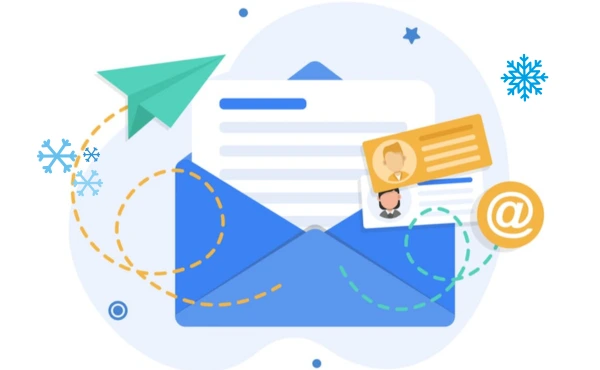
Email copywriting suggestions additionally assist whilst writing cold emails. Sensitivity in creating a message that speaks directly to the reader’s needs. Highlight the benefits of your product or service in just a few sentences. Make it easy for the reader to recognize how your offer can resolve their issues. When humans quickly see the price in what you’re presenting, they are more likely to do so.
In addition, cold email automation tools let you send multiple emails at once at the same time preserving them personalized. Automation saves time, but it’s still important to ensure your emails are clear and concise. Powerful cold email strategy involves personalizing your message and keeping it quick and sufficient to get a quick response. You don’t want to weigh down your recipient with an excessive amount of statistics.
Key Metrics for Cold Email Campaigns
Industry Benchmarks:
- Average Open Rate: 15-25%
- Click-through Rate: 2-5%
- Response Rate: 1-5%
- Bounce Rate: Keep under 2%
Tracking Metrics:
- Delivery Rate = (Sent - Bounces) / Sent
- Open Rate = Opened / Delivered
- Click Rate = Clicks / Opened
- Response Rate = Replies / Delivered
Success Indicators:
- Spam Complaint Rate < 0.1%
- Unsubscribe Rate < 0.5%
- Positive Response Rate > 2%
Writing An Effective Cold E-mail: A Step-By-Step Guide

Writing a hit cold email can be a recreation-changer in your business, whether you are reaching out to capability clients, companions, or customers. Initiating a cold email means establishing a relationship, initiating communication, and eventually pushing for a sale or an assembly. However, doing it well can be challenging, so using a clear, calculated approach is important.
Here’s an easy breakdown of the stairs to writing an effective cold e-mail:
1. Create a Subject Line
Your subject lines for cold emails are the first thing the recipient sees in their inbox. It’s the first impression you make, and it can determine if they open your email or not. A great subject line length is short, clear, and personalized. When your subject line is personalized, like using the recipient’s name or their company’s name, it feels more relevant and attention-grabbing.
For example, you might say, "Improve [Company Name]’s productivity in 7 Days" or "Quick question for [Recipient’s Name]." These cold email subject lines are direct and make the recipient feel like the email is meant just for them.
Personalizing the subject line is also related to email personalization strategies, which is a key part of any sales email strategy. When you personalize, it shows you care and have taken the time to understand who you're reaching out to. This will increase your chances of engagement, making your emails stand out from the many other generic messages people receive daily.
2. Write An Impactful Introduction
The introduction of your email is just as important as the marketing subject line. It's the second thing your recipient reads, and it needs to grab their attention right away. The best way to do this is by addressing them by name and bringing up something interesting or relevant to them.
For example, if you know the person has recently achieved something great at work, mention it. This helps you build a connection and shows you're not just sending a mass email.
A strong opening establishes rapport with the recipient. It gives your email a more personal feel and makes it easier for them to connect with you. When you use cold email personalization and refer to specific details, you are more likely to see better results from your email marketing campaigns. This ties into email engagement strategies, where a personalized and well-created introduction increases the chances of your email being read and acted upon.
3. Spotlight Your Value Proposition
In this part of the email, it’s time to tell the recipient exactly how your offer can help them. Instead of just talking about the features of your product or service, focus on the benefits. Explain how your solution addresses their specific pain points and makes their life easier. This is where you can use social proof to support your claims.
For example, you might say, "In the first month, our platform increased [Company Name]’s productivity by 35%." This kind of data builds trust and shows that others have already seen success using your service.
A clear value proposition is one of the key ingredients of high-converting cold emails. It’s important to show the recipient how your offer is a solution they need, and by focusing on their challenges, you can make your offer more attractive. This is where lead generation through email comes into play. When your value proposition resonates with the recipient, they are more likely to take action and become a lead.
4. Include A Clear Call-to-Action (CTA)
Once you have captured the recipient's interest, it's time to guide them on the following step with a clean name-to-motion (CTA). This can be a simple request, like "Are you available for a fast 15-minute name subsequent week?" or " If you need greater data, respond 'yes. '" Keep the CTA simple and plausible to make it clean for the recipient to reply.
A straightforward and actionable CTA will increase the chance of a reaction, contributing to reaction rate optimization. Through adding a CTA, you manual the recipient to the next step, whether or not it is scheduling a name, downloading an aid, or replying to your email. Include a CTA in compliance with emails properly.
Remind the recipient of your preceding email and ask again if they are interested in your provide. Follow-up emails are vital for improving recipient reaction, as they boost the probability of having observed and receiving a response.
5. Polish Your Signature
A professional email signature adds credibility to your cold email. It shows that you're serious and trustworthy. In your signature, include your name, title, company, and contact information. This makes it easier for recipients to get in touch with you.
You can also add links to your website or LinkedIn profile. This gives people a way to learn more about you and your business. It's a simple way to make your email stand out and show that you're a real professional.
If you're using a sales email strategy, a polished signature is important. It helps create a lasting impression and builds trust with potential customers or partners. Including your signature also makes your cold email templates look more polished and professional.
When you're building your email list, make sure your signature is part of your process. It can encourage more people to engage with your emails. If you're focusing on email personalization, a signature adds a personal touch. It helps make your email feel complete and shows you took time to craft it.
In short, a strong email signature is a small but important detail that can improve your cold email success.
The Ways Make Cold Emails Quick?

The subsequent conditions make quick cold emails most effective:
Introducing Yourself
If the recipient is new to you or your business, a short email makes things a lot easier because it eases their first hesitation and encourages them to interact with your message more confidently and easily. A short message is more approachable and shows respect for their time.
Achieving Busy Executives
Since high-level executives are often busy, short emails have a higher chance of being read.
Following Up
After sending an initial email, ensure that your cold email follow-up message remains succinct and direct to maintain clarity and encourage a prompt response.
Checking Out The Waters
A short email is a low-effort method to determine hobby in case you're now not sure if the recipient is the correct touch.
When Are You Making Cold Emails Longer?
Even while shorter emails tend to be greater effective, there are several conditions in which a lengthier e-mail is suitable:
Giving Targeted Records
If the recipient has previously indicated an interest in the products or services you provide, include more statistics about them.
Setting Up Credibility
Longer emails with thorough justifications and social proof are probably convincing for sectors like generation or finance.
Creating A Sales Pitch
Provide thorough info to support your offer and encourage action. Five short cold email templates that are less than 150 words long.
Cold Email Templates
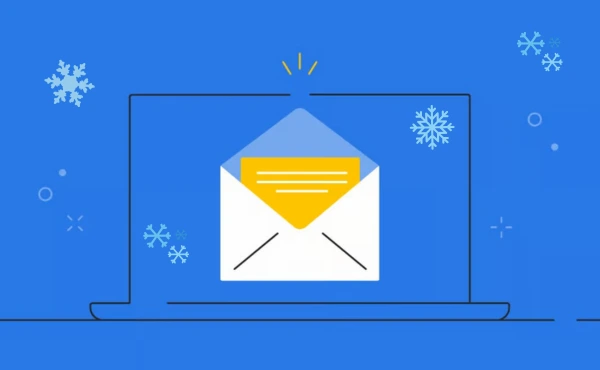
Discover effective cold email examples with customizable templates to streamline outreach, personalize messages, and boost response rates.
Template 1: Introduction Email
Subject: Helping [Company Name] Achieve [Specific Goal]
Hi [Recipient’s Name],
I admire the work [Company Name] is doing in [specific field]. I specialize in helping businesses like yours achieve [specific goal] through [your product/service].
Would you be open to a brief call to explore how we can assist? Let me know your availability.
Best regards,
[Your Name]
[Your Contact Information]
Template 2: Follow-Up Email
Subject: Following Up on My Previous Email
Hi [Recipient’s Name],
I just wanted to follow up on my earlier email. I’d love the opportunity to discuss how we can help [Company Name] achieve [specific goal].
Can we schedule a short call this week?
Best regards,
[Your Name]
Follow-up Cold Email Best Practices
Timing Schedule:
- 1st follow-up: 2-3 days after initial email
- 2nd follow-up: 4-5 days after first follow-up
- 3rd follow-up: 7-8 days after the second follow-up
- Final follow-up: 14-15 days after the third follow-up
Follow-up Content:
- Reference the previous email
- Add new value proposition
- Keep shorter than initial email
- Change call-to-action approach
Stop Sequence When:
- Recipient responds
- After 4-5 follow-ups
- A clear negative signal received
Template 3: Value Proposition Email
Subject: Increase [Specific Metric] by [Percentage]
Hi [Recipient’s Name],
We’ve helped companies like [Client Name] improve [specific metric] by [percentage] in just [timeframe]. I’d like to share how we can do the same for [Company Name].
Are you available for a quick chat?
Best,
[Your Name]
Template 4: Networking Email
Subject: Inspired by Your Work
Hi [Recipient’s Name],
I recently came across your work on [specific topic] and was truly inspired by your insights. I’d love to connect and explore potential collaboration opportunities.
Let me know if you’re open to a conversation.
Best regards,
[Your Name]
Template 5: Sales Pitch Email
Subject: Unlock [Specific Benefit] for [Company Name]
Hi [Recipient’s Name],
I noticed that [Company Name] is focusing on [specific goal]. Our [product/service] has helped companies like yours achieve [specific benefit].
Would you like to learn more? Let’s schedule a quick call.
Best,
[Your Name]
The Position Of Personalization In Cold Emails

Personalization is key to making your cold emails stand out in a crowded inbox. When you customize an email, it feels special and important to the character studying it. This makes them more likely to open and study your email because it speaks immediately to their needs or interests.
An easy way to customize your email is via the usage of the character's call. You can also mention their company or something they’ve currently accomplished. This shows that you've done your research and are interested in their works, which makes the construct credible and motivates them to engage.
Customized emails also have higher consequences. People are more likely to open them, so your email campaigns emerge as greater a success. You can test one-of-a-kind versions of your emails, like converting the name or problem line, to see which one works great. This allows you to enhance your emails through the years.
Personalized Cold Emails: Strategies For Connection And Conversion
When your email feels personal, it sounds more like a friendly conversation rather than a sales pitch, increasing the chances of turning the recipient into a customer or lead. Cold email scripts help keep your emails organized, while cold email funnels ensure the right message is sent at the right time.
Automation tools make personalization easier by automatically adding details like names or companies, saving time. Email drip campaigns maintain communication based on previous responses. Tracking your email results is important to see what's working and what needs improvement. Cold email software helps send customized emails quickly to many people, maintaining a personalized touch.
Personalization is useful for more than just sales it's also effective in attracting new team members or networking connections. Cold email response rates and templates make follow-ups easy while keeping them personal.
Tools To Decorate Your Cold E-Mail Approach

Personalizing your cold emails quickly increases their effectiveness, helping you achieve your objectives and improve response rates. modifying your charge schedule to address specific issues.
1. E-Mail Automation Tools
Structures like Mail Shake, Outreach, and HubSpot allow you to automate cold email campaigns, track performance, and optimize outreach efforts.
2. A/B Testing Emails
Try different email lengths, subject lines, and calls to action to see what works best for your audience. Try alternative CTAs like making a call or clicking a link, short or lengthy emails, and interesting or straightforward subject lines. Examine answers to improve your approach and produce more interesting, successful cold email marketing.
Comprehensive Email Testing Framework
Subject Line Testing:
- Personal vs. Professional tone
- Length (30-50 characters optimal)
- Including the recipient's name
- Question vs. Statement format
Content Testing:
- Avoid spam trigger words like:
"Free"
"Guaranteed"
"No obligation"
"Limited time"
- Test sending times:
Tuesday-Thursday optimal
10 AM - 2 PM recipient time
Avoid Mondays and Fridays
Call-to-Action Testing:
- Single vs. multiple CTAs
- Button vs. text link
- Placement (top, middle, bottom)
- Various action verbs
3. Sales Engagement Tools
Tools like LinkedIn Sales Navigator and Dripify streamline prospecting and observe-ups, supporting you to preserve consistency and performance.
4. Advertising Automation Equipment
Lead nurturing and conversion rates are enhanced by integrating email campaigns with stronger advertising automation systems.
5. Prioritize Readability
Avoid using jargon and focus on using clear, honest language. Make sure your email is easy to read and can be quickly read.
6. Use Skimmable Content Material
Divide your email into short paragraphs or bullet points. This layout improves readability and helps recipients draw close to your message quickly.
7. Upload A Pattern Interrupt
Include a surprising element or specific technique to capture interest. For instance, referencing a recent industry trend could make your email more attractive.
Conclusion
Creating the ideal cold email length requires hanging careful stability amongst cost, personalization, and brevity. You can notably boom your reaction charges through deep know-how of your audience, specializing in a clear and concise message, and making use of gear to optimize your outreach. Keep in mind, that the proper cold email respects the recipient's time whilst supplying a compelling purpose to engage. This includes now not only personalizing the content material to make it relevant to the recipient but additionally ensuring that the email is succinct and directly to the factor.
Effective use of cold email gear and techniques will help hold company and performance to your campaigns. Always keep in mind that each innocent email must be affordable, customized for the recipient's character, and fast enough to hold their interest without being excessive. By getting to know those factors, you can create cold emails that can be impactful and respectful, improving your probability of producing a superb response and fostering significant connections. If you want to learn about how to send cold emails safely without getting blocked, Check out our blog on How to Send Cold Emails Safely Without Getting Blocked
FAQs
1. How Lengthy Must A Cold Email Be?
The optimal length is between 50 and 125 words, focusing on readability and relevance, ensuring the message is clear and concise, making it more effective for the recipient.
2. What Makes A High-quality Concern Line?
A great subject line is brief, personalized, and attention-grabbing, making sure it captures the recipient's interest immediately while conveying the email's purpose.
3. Am I Able To Use Cold Emails For B2B Income?
Certainly, cold emails are a powerful tool for building connections and driving B2B sales, effectively creating opportunities and fostering business relationships.
4. What Are A Few Common Errors To Avoid?
Avoid overly long emails, generic templates, and not including a clear CTA, ensuring your messages are concise, personalized, and action-oriented to increase effectiveness and engagement.
5. How Can I Improve My Reaction Costs?
Personalize your emails, keep them concise, and focus on delivering value to the recipient. This approach ensures your messages are relevant, engaging, and effective in capturing the recipient's attention.
References
Boomerang. (2016). "The Best Length for an Email".
Mailshake. (2019). "How Long Should a Cold Email Be?".
SalesHandy. (2021). "Cold Email Length: What Works Best?".
What to read next
Absolutely! Boost Inbox is compatible with most major email service providers.
The warmup process duration may vary depending on your email volume, but it typically ranges from a few days to a couple of weeks.
Yes, Boost Inbox offers dedicated customer support to assist you throughout the warmup process.
While it's possible, it's best to start the warmup process from the beginning with Boost Inbox for optimal results.
